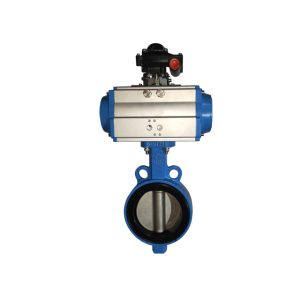Table of Contents
ToggleA PTFE ball valve is a versatile part of many industrial processes, allowing liquid or gas to flow through the valve. It can rotate 90 degrees and is sealed at both ends with solid sides. Its durable design ensures that no leaks will occur. The material is known as PTFE, which is the same as Teflon.
A PTFE ball valve manufacturer can produce the body of the valve in a wide range of stainless steel and cast ductile iron materials. This material is often used in high-pressure, corrosive environments and as an alternative to metal valves.
It is also used in petrochemical plants for flow control and transfer of chemicals. In addition to petrochemical processes, a PTFE-coated ball valve can be found in the manufacturing of fertilizers, pesticides, dyes, and pulp and paper processing plants.
If you want to know more about the PTFE ball valve, continue reading this article.
What is a PTFE Ball Valve?
It is a type of ball valve which is manufactured using PTFE material. This valve is a popular choice for food processing and packaging applications. The material is highly resistant to abrasion and high temperatures. PTFE is also fire-resistant.
There are two types of PTFE ball valves: glass-filled and virgin. Glass-filled PTFE has the lowest coefficient of friction and is ideal for food-processing applications. The virgin type requires no lubricants to operate, making it ideal for dry running.
The full port, two-piece split body, bolted body construction, and integral ball-and-stem design of the PTFE liner ensure that the valve remains leak-free and will not collapse under high pressure or temperature. The PTFE lining locks into slots in the casting ball to prevent it from the blowout.
PTFE is a versatile material that is resistant to chemicals and has no reaction with them. It is also an excellent choice for cookware, as metals like aluminum corrode easily when they come in contact with acids. Additionally, PTFE is not electrically conducting. Thus, PTFE is an excellent choice for hose linings, machine parts, and other components.
Applications of PTFE Ball Valve
The PTFE ball valve has numerous applications, but it is perhaps most commonly used for pharmaceutical processes. It is FDA-approved and exhibits the lowest coefficient of friction. It also does not stick to itself. It does not absorb lubricants and is non-sticky. It is also FDA-approved and available in both filled and virgin forms.
The advantages of PTFE are the high chemical resistance, low friction, and wide temperature range. These qualities make PTFE ideal for many industrial applications, including the pharmaceutical and food industries. Some PTFE ball valves are filled with glass fiber, carbon fiber, graphite, bronze, or glass. In many cases, the PTFE ball valve is the preferred material for the seat material. The advantages of a PTFE ball valve are numerous.
For cryogenic applications, a PTFE ball valve is the preferred choice because of its high sealing capability and quick action. Its standard size and high strength make it an excellent choice for cryogenic applications. The PTFE ball valve is highly chemical-resistant. Its resilience means it has an extended service life. This makes it a popular choice for a variety of applications.
Whether the valve is used in industrial processes or in pharmaceuticals, the PTFE ball valve must be reliable, durable, and easy to maintain. These are all factors that determine the type of valve you should choose. For a cryogenic application, you need a valve with excellent sealing capabilities.
PTFE also has the advantage of being chemically and thermally inert. As a result, it is highly compatible with various media. It has excellent chemical and mechanical properties, but it cannot withstand fluorine or liquid alkalis. Its operating temperature range extends from cryogenic to 400 degrees Fahrenheit. Its low coefficient of friction makes it an ideal choice for machine parts and hose linings.










